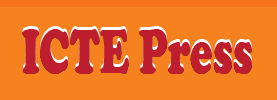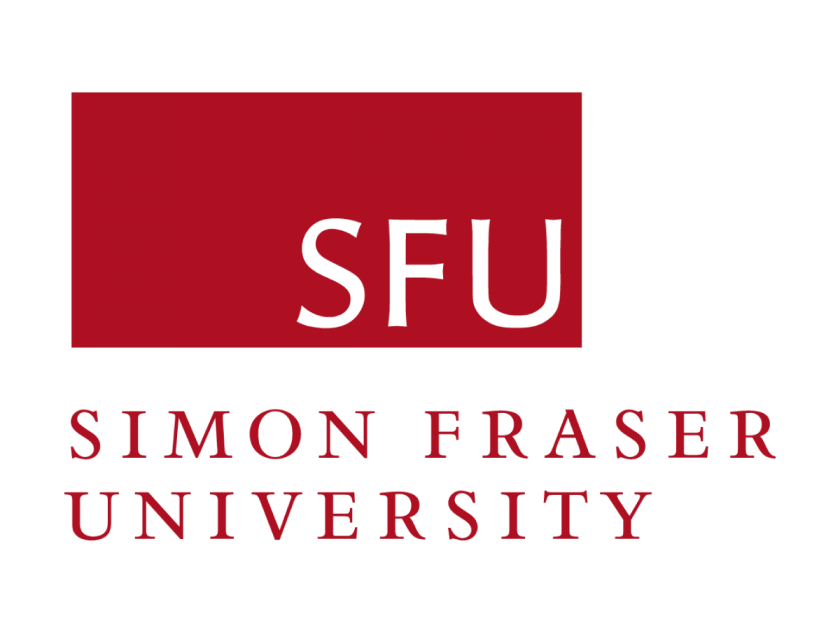Students’ Perceptions of the Effect of Blended Learning on their Learning Autonomy
DOI:
https://doi.org/10.54855/paic.24620Keywords:
Blended learning, Learning autonomy, Perceptions, Vietnamese studentsAbstract
Learning autonomy is a critical skill that significantly impacts students' success or failure in the classroom and their pursuit of lifelong learning. Today, learning autonomy is simpler than ever due to the rapid advancement of information technology. From these perspectives, this study investigates students' perceptions of the effect of blended learning (combining traditional teaching and online teaching) on their learning autonomy. With the participation of 120 students, the study combined both quantitative and qualitative methods through questionnaires and interviews. The results show that blended learning had the largest impact on learners' motivation, self-assessment, and acquiring teachers' requirements. Besides, the research also revealed some elements of blended learning that have not really enhanced learner autonomy, such as establishing study goals and implementing a learning strategy. I hope this study can provide teachers with an overview of the blended learning model and offer some suggestions to improve the effectiveness of this model when applied to teaching in Vietnam universities.
References
Adianingrum, E. K. (2017). Learner autonomy in language learning : English education students’ attitudes. Conference on Language and Language Teaching, 1999, 473-478.
Bath, D., & Bourke, J. (2010). Getting Started with Blended Learning. Griffith Institute for Higher Education.
Benson, P. (2016). Language learner autonomy: Exploring teachers’ perspectives on theory and practice. Language Learner Autonomy: Teachers’ Beliefs and Practices in Asian Contexts, XXXIII-XLIII.
Bui, H., & Vu, T. (2020). Blended Learning in a University Writing Course – A Test of Effectiveness. Malaysian Journal of ELT Research, 17(2), 46-73. https://meltajournals.com/index.php/majer/article/view/562/545
Cao, T. X. L. (2023). Benefits and challenges of using LMS in blended learning: Views from EFL teachers and students at a Vietnamese public university. International Journal of TESOL & Education, 3(3), 78-100. https://doi.org/10.54855/ijte.23335 DOI: https://doi.org/10.54855/ijte.23335
Chen, J. (2022). Effectiveness of blended learning to develop learner autonomy in a Chinese university translation course. Education and Information Technologies, 27(9), 12337–12361. https://doi.org/10.1007/s10639-022-11125-1 DOI: https://doi.org/10.1007/s10639-022-11125-1
Dixon, D., Ushioda, E., Nesi, H., & Smith, R. (2011). Measuring language learner autonomy in tertiary-level learners of English. Centre for Applied Linguistics.
Do, T. T. L., Pham, N. T., & Ngo, P. A. (2024). Measuring EFL Learners’ Perceptions of Technology Self-efficacy in Online Language Learning. International Journal of Language Instruction, 3(3), 54–78. https://doi.org/10.54855/ijli.24334 DOI: https://doi.org/10.54855/ijli.24334
Ghufron, M. A., & Nurdianingsih, F. (2019). Flipped teaching with call in EFL writing class: how does it work and affect learner autonomy?. European Journal of Educational Research, 8(4), 983-997. https://doi.org/10.12973/eu-jer.8.4.983 DOI: https://doi.org/10.12973/eu-jer.8.4.983
Goulão, M. de F., & Menedez, R. C. (2015). Learner Autonomy and Self-regulation in eLearning. Procedia - Social and Behavioral Sciences, 174, 1900-1907. https://doi.org/10.1016/j.sbspro.2015.01.853 DOI: https://doi.org/10.1016/j.sbspro.2015.01.853
Heriyawati, D. F., Ismiatun, F., & Octaberlina, L. R. (2023). The Impact of Blended Learning on EFL Students’ Perception of Autonomy and Writing Achievement. In M. F. Ubaidillah et al. (eds.), Proceedings of the 4th International Conference on English Language Teaching (ICON-ELT 2023), Advances in Social Science, Education and Humanities Research 780 (pp. 182-189). https://doi.org/10.2991/978-2-38476-120-3_17 DOI: https://doi.org/10.2991/978-2-38476-120-3_17
Holec, H. (1981). Autonomy and Foreign Language Learning. Oxford/New York: Pergamon Press.
McHone, C. (2020). Blended Learning Integration: Student Motivation and Autonomy in a Blended Learning Environment. Ph.D thesis of Education in Educational Leadership. Department of Educational Leadership and Policy Analysis, East Tennessee State University.
Mohammed, H. S., Aicha, B., Rahil, M. (2023). EFL Students’ Perceptions about the Effect Of Blended Learning On Their Learning Autonomy. Journal of Language and Linguistic Studies, 19(3), 85-105. https://www.jlls.org/index.php/jlls/article/view/5453/1934
Mrajca, A., & Polok, K. (2021). The Development of Learners’ Autonomy through Blended Learning Activities. Asia-Pacific Journal of Educational Management Research, 6(2), 1-14. http://dx.doi.org/10.21742/ajemr.2021.6.2.01 DOI: https://doi.org/10.21742/AJEMR.2021.6.2.01
Nguyen, T. H. (2023). An Investigation into the Effectiveness of the Blended Learning Approach to Writing Skills: Using Google docs. ICTE Conference Proceedings, 3, 52-67. ISSN:2834-0000. ISBN: 979-8-9870112-2-5. https://doi.org/10.54855/ictep.2335 DOI: https://doi.org/10.54855/ictep.2335
Nguyen, T. H. H., Ho, T. N., Do, T. M. D., & Pham, T. T. T. (2024). Factors Affecting Learner Autonomy in EMI Studying of English-Major Students at some Economics Universities in Hanoi, Vietnam. International Journal of Language Instruction, 3(3), 36–53. https://doi.org/10.54855/ijli.24333 DOI: https://doi.org/10.54855/ijli.24333
Nguyen, T. N. N., & Phuong, H. Y. (2022). Online learning and its potential in developing EFL learner autonomy: English-majored students' perceptions. European Journal of English Language Teaching, 7(6), 186-210. http://dx.doi.org/10.46827/ejel.v7i6.4610 DOI: https://doi.org/10.46827/ejel.v7i6.4610
Nguyen, S. Van, & Habók, A. (2021). Designing and validating the learner autonomy perception questionnaire. Heliyon, 7(4), e06831. https://doi.org/10.1016/j.heliyon.2021.e06831 DOI: https://doi.org/10.1016/j.heliyon.2021.e06831
Nguyen, B. D., & Le Thi, H. V. (2021). EFL Learners’ Perceptions of the Impact of Learning Management System on Learner Autonomy in Vietnam. International Journal on E-Learning Practices (IJELP), 4, 10–21. https://doi.org/10.51200/ijelp.v4i.3404 DOI: https://doi.org/10.51200/ijelp.v4i.3404
Pham, T. H. (2023). Fostering learner autonomy in a blended learning environment: EFL teachers' practices at Hanoi University of Industry. International Journal of TESOL & Education, 3(3), 39-56. https://doi.org/10.54855/ijte.23333 DOI: https://doi.org/10.54855/ijte.23333
Pham, T. T. H. (2021). Implementing the blended learning model in Vietnam higher education sectors (n Vietnamese). Journal of Industry and Trade, 23(10), 296-301. https://tapchicongthuong.vn/bai-viet/van-dung-mo-hinh-hoc-tap-ket-hop-blended-learning-trong-giang-day-bac-dai-hoc-tai-viet-nam-hien-nay-85009.htm
Powell, A., Watson, J., Staley, P., Patrick, S., Horn, M., Fetzer, L., Hibbard, L., Oglesby, J., & Verma, S. (2015). Blending learning: The evolution of online and face-to-face education from 2008-2015. INACOL, The International Association for K-12 Online Learning, 1-19. https://files.eric.ed.gov/fulltext/ED560788.pdf
Ribbe, E., & Bezanilla, M. J. (2013). Scaffolding learner autonomy in online university courses. Digital Education Review, 24(1), 98-112. https://core.ac.uk/download/pdf/39131169.pdf
Seliger, H. W., & Shohamy, E. (1989). Second Language Research Methods. Oxford University Press.
Serdyukova, N., & Serdyukov, P. (2013). Student autonomy in online learning. CSEDU 2013 - Proceedings of the 5th International Conference on Computer Supported Education, 229-233. https://doi.org/10.5220/ 0004353102290233 DOI: https://doi.org/10.5220/0004353102290233
Smith, R., Kuchah, K., & Lamb, M. (2017). Learner Autonomy in Developing Countries. In A. Chik, N. Aoki, & R. Smith (Eds.), Autonomy in Language Learning and Teaching; New Research Agendas. (pp. 7 - 27). Palgrave Macmillan. https://doi.org/10.1057/978-1-137-52998-5_2 DOI: https://doi.org/10.1057/978-1-137-52998-5_2
Surabaya, U. N. (2021). Exploring learner autonomy in online classes among Indonesian EFL students. Research on English Language Teaching in Indonesia, 9(02), 112-119.
Tran, D. K., & Vu, T. K. C. (2024). Investigating Learners’ Perspectives on ELSA Speak Integration to Enhance Autonomy and Oral Language Proficiency in English Classes. Proceedings of the AsiaCALL International Conference, 6, 182–192. https://doi.org/10.54855/paic.24613 DOI: https://doi.org/10.54855/paic.24613
Tran, Q. T., & Duong, H. (2021). Tertiary Non-English Majors’ Attitudes Towards Autonomous Technology-Based Language Learning. Proceedings of the AsiaCALL International Conference, 533(978-94-6239-343-1), 141–148. https://doi.org/10.2991/assehr.k.210226.018 DOI: https://doi.org/10.2991/assehr.k.210226.018
Victori, M., Lockhart, W. (1995). Enhancing metacognition in self-directed language learning. System, 23(2), 223-234. https://doi.org/10.1016/0346-251X(95)00010-H DOI: https://doi.org/10.1016/0346-251X(95)00010-H
Wang, X., & Zhang, W.(2022). Improvement of Students’ Autonomous Learning Behavior by Optimizing Foreign Language Blended Learning Mode. SAGE Open, 12(1), 1-10.https://doi.org/10.1177/21582440211071108 DOI: https://doi.org/10.1177/21582440211071108
Downloads
Published
How to Cite
Issue
Section
License
Copyright (c) 2024 Phan Thi Ngoc Le

This work is licensed under a Creative Commons Attribution 4.0 International License.
Copyright
The copyright of all articles published in the Proceedings of the AsiaCALL International Conference (paic) remains with the Authors, i.e. Authors retain full ownership of their article. Permitted third-party reuse of the open access articles is defined by the applicable Creative Commons (CC) end-user license which is accepted by the Authors upon submission of their paper. All articles in the aicp are published under the CC BY-NC 4.0 license, meaning that end users can freely share an article (i.e. copy and redistribute the material in any medium or format) and adapt it (i.e. remix, transform and build upon the material) on the condition that proper attribution is given (i.e. appropriate credit, a link to the applicable license and an indication if any changes were made; all in such a way that does not suggest that the licensor endorses the user or the use) and the material is only used for non-commercial purposes.









